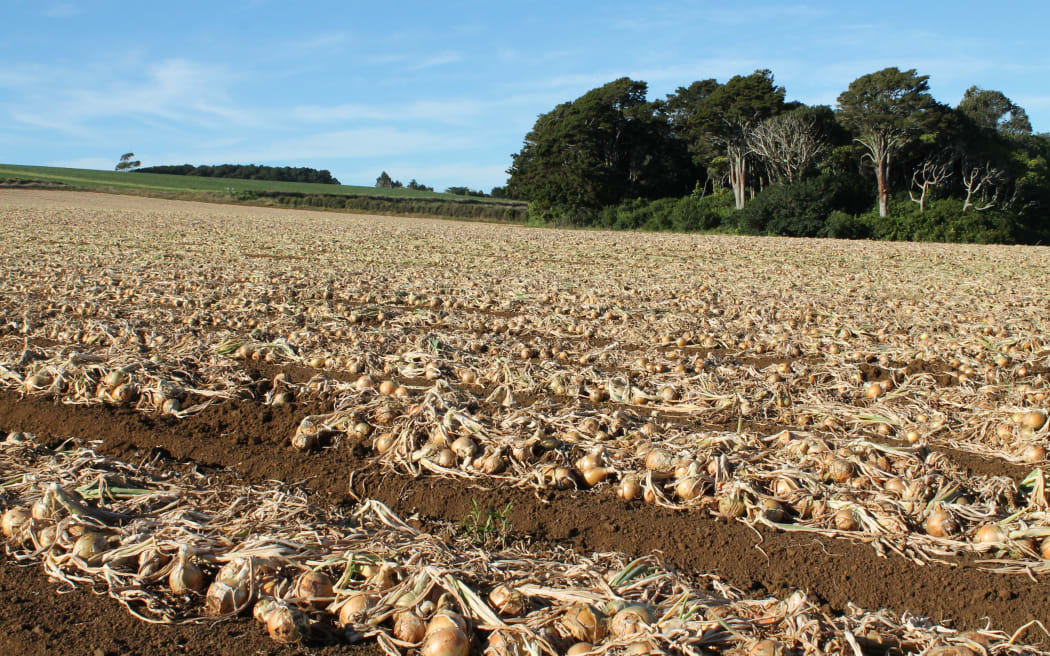
An onion paddock in Pukekohe Photo: Supplied
In Northland the biggest issue is the huge soil moisture deficit. Readings are well below historical levels for January, and the region's approaching a drought if no more rain falls. Some did mid-January but not enough. However if there is a drought it will be a short one, people say, which is better than earlier forecasts. Meanwhile the region's kumara crop is looking good. Early harvesting starts in a couple of weeks, with volumes ramping up from late February.
In the Pukekohe area there have been light falls of rain since December but irrigators are still being well used. Onion growers are working seven days a week to transport their dry, mature onions into the packing sheds. Crop yields are said to be good. As container ships aren't going through the Red Sea, growers are paying an extra $1500 a container or $2 per bag of onions to get the crop to Europe.
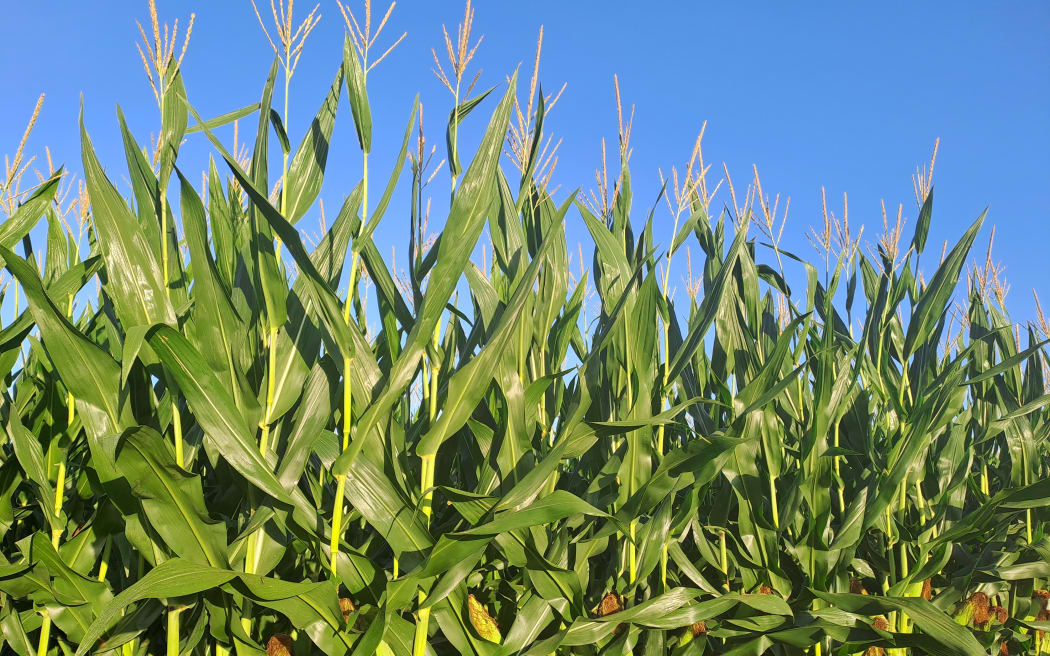
Maize on a Waikato farm Photo: Susan Murray
In Waikato, it's been hot and humid with grass growth rates significantly better than expected. All stock are doing very well and milk production is holding. Maize is outstanding - a perfect summer for it. It's been hot and humid with good spring rain. Yields could be 24 tonnes to the hectare, compared to the more normal 20 tonnes. It's also been a cracker season so far for blueberry growers and they've still got plenty of picking to do.
Bay of Plenty farmers and kiwifruit orchardists are having a whale of a time with rain every four days or so. It's not too dry and not too wet. Gold kiwifruit looks to be nine out of 10, green - six out of 10. Milk production's holding here too. But for avocado growers it's been a disaster of a season. Returns from the crop will barely cover picking, according to one grower. He says there are real structural issues in the sector - too much fruit, and the once good Australian market isn't so anymore.
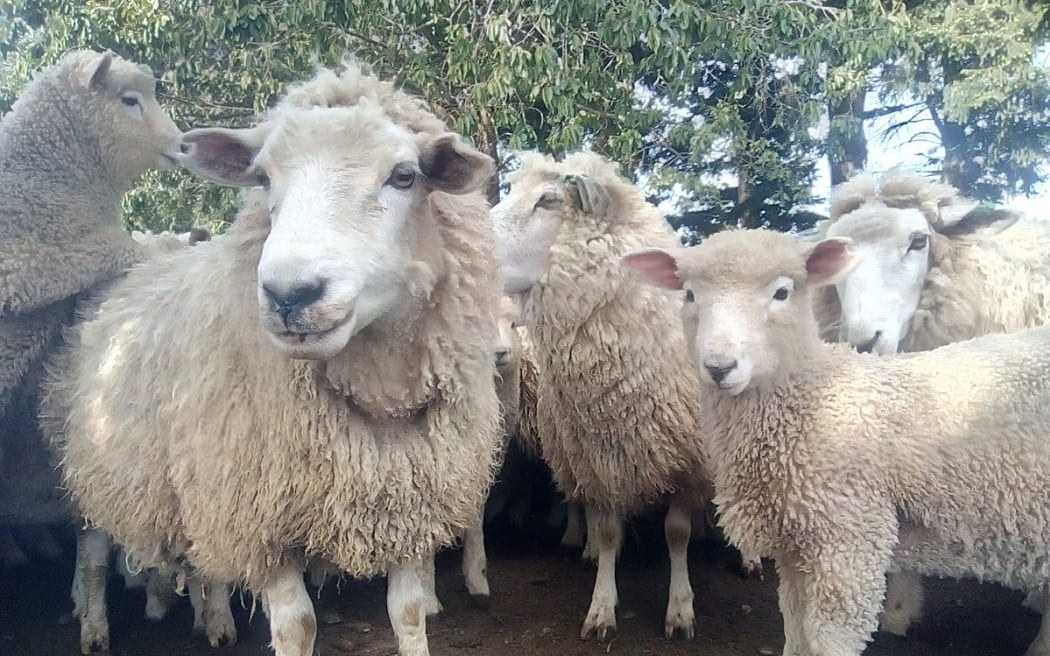
Photo: Sophie Barnes
There's been a good volume of rain in King Country. Grass has been growing like crazy. Sheep are looking good, but lambs need a bit more heat. The region's bucking the nationwide very low ewe price last week. Five-year-old ewes in super condition sold for $170 a head at the Te Kuiti sale, and $150 at Ongarue. Most ewes have been fetching at least half that.
Our farmer contact in Taranaki says nature has been doing its part all summer so grass growth's good. He had just had a helicopter in to spray a top-looking maize crop for Northern Leaf Blight, a disease that's appeared in the past two seasons.
The Taihape/ Whanganui region's a little drier and more cooked-looking than the Central Plateau. As is the case on sheep farms nationwide, farmers are trying to hold onto store lambs to get more weight on them and recover some money because the schedule price is abysmal. Lamb prices have halved from two seasons ago. Cash flow is tight and uncertainty in the rural sector is evident. A number of farms are coming onto the market but not selling. In the dairy sector, with earlier predictions of a dry summer, farmers have been off loading their poorer performing cows and now milk production totals are behind last year.
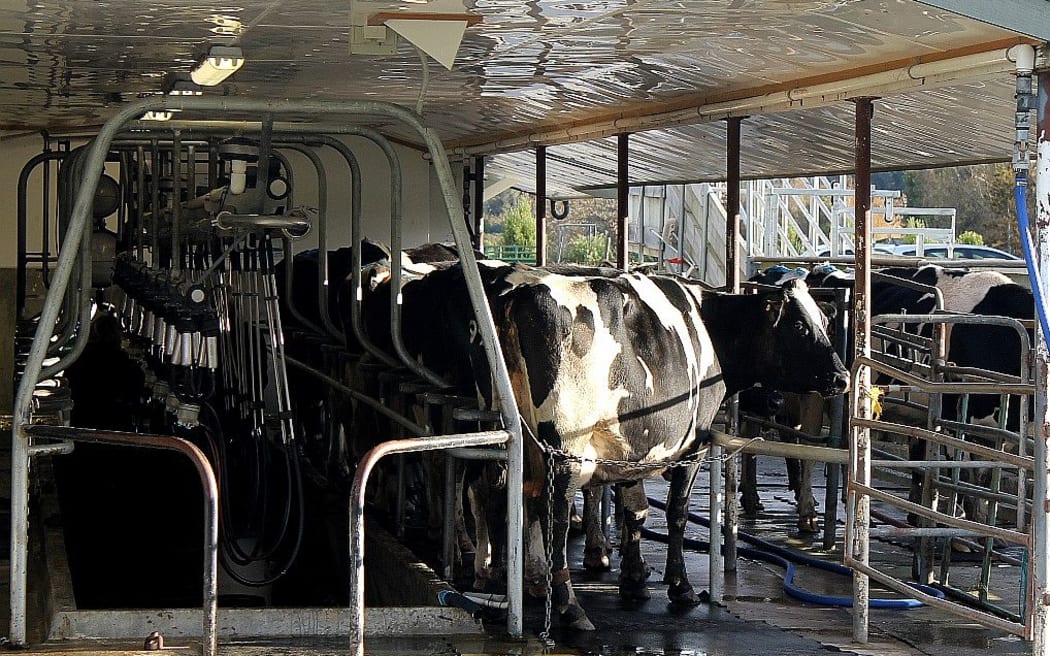
Photo: RNZ/Cosmo Kentish-Barnes
It's been a typical summer in Manawatū. Grass levels are generally pretty good for the end of January. The real highlight again are the top-notch crops of maize, fodder beet, barley, wheat and brassica. It's giving sheep farmers the confidence to buy in store lambs because they have feed for them. Turakina is preparing the haggis and the caber for its annual Highland Games this weekend and they're hoping the good weather will hold.
The East Coast kept getting rain all summer so is comfortable feed-wise. Unlike other regions, crops are a couple of months behind where they should be because a very wet spring delayed planting - but they're growing well now. At last it's been fine enough for farmers to crack into cyclone repairs in earnest.
Hawkes Bay apple orchardists are looking forward to a healthy harvest which starts, for some, in a few weeks. There's plenty of fruit, and trees still standing seem to be coping with their crop loads. There has been concern that they mightn't cope after last year's destructive cyclone. Grape growers are also having a good run with quality fruit. Yields are back a bit, although not concerningly so at this stage.
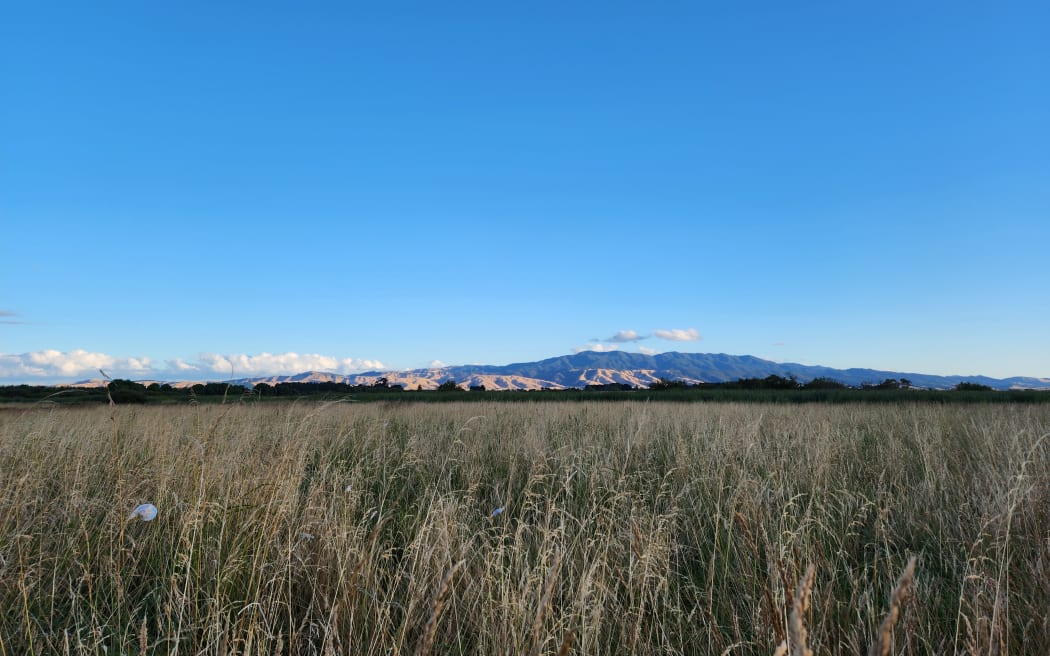
Paddocks have been browning off in Wairarapa Photo: RNZ/Sally Round
A farmer and vet in Wairarapa says they're having a normal summer for a change, which means hot days. Plenty of hay and baleage has already been made, thankfully, as pastures are browning off now. With low lamb prices and plenty of grass some farmers are holding on to store stock for longer.
It's very, very dry in Horowhenua - which is unusual. Covers are light and dairy farmers are pulling the trigger earlier than normal and drying light cows off and they're thinking about rain dancing. As elsewhere, maize is loving the conditions.
Across Cook Strait and in the Tasman region the upcoming apple season is looking promising, after the past few which have had hail, heavy rain and labour issues. Fruit size is down a bit in the dry, and the crop's lighter, but it hasn't needed as much thinning for blemish or black spot this season.
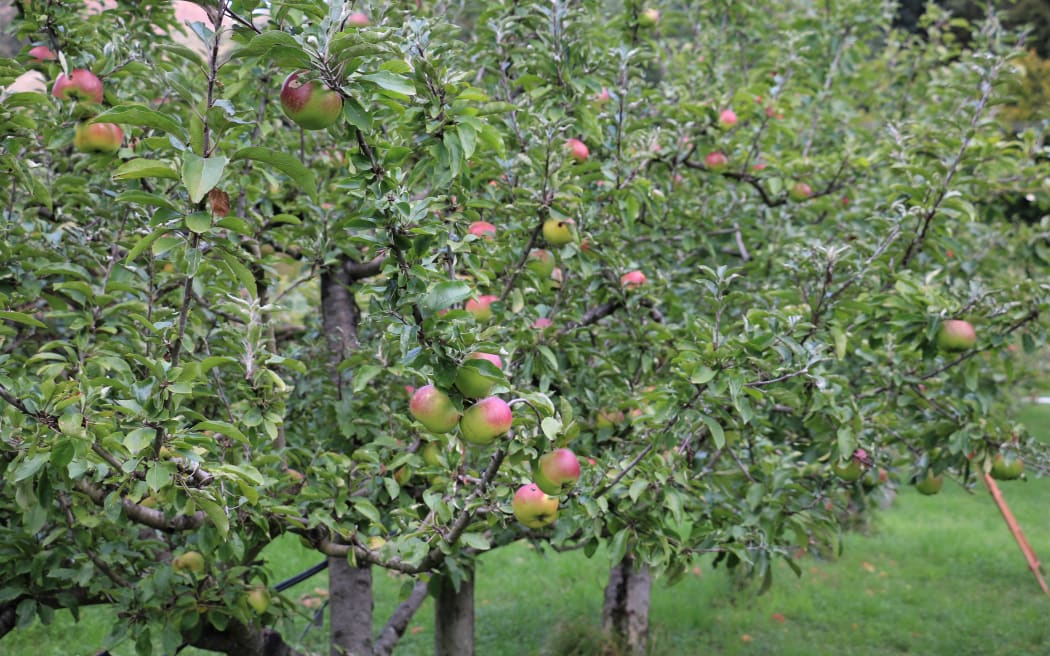
The apple harvest is looking promising in the Tasman region Photo: Supplied
Eastern Marlborough is running a month ahead of normal for conditions and is very dry. Ward and Seddon look bad. Some farmers have had only15 millimetres since October and it's as dry as the bad drought of 1997. Back country areas have had more rain so aren't as dire. One grower we caught up with says the grape crop is lighter after frosts in October and a poor flowering, but it's not too much of a bother because there is still a lot of unsold wine sitting in tanks from the last harvest. Europe and the UK are cutting back on wine consumption.
The West Coast copped huge rainfall a week ago. There was some surface flooding, but it didn't cause issues for farmers, we're told.
In Canterbury it's hot, windy and pastures have turned brown. Some irrigation schemes are on restrictions due to low river flows, and even farms with full irrigation are battling to get enough water to keep growth going. Farmers are dishing out supplementary feed. Drought may be close, although in Mid Canterbury recent rain has allowed a bit of a catch up. In fact the rain's temporarily halted the arable harvest which started well. The fire risk is high with several vegetation fires recently.
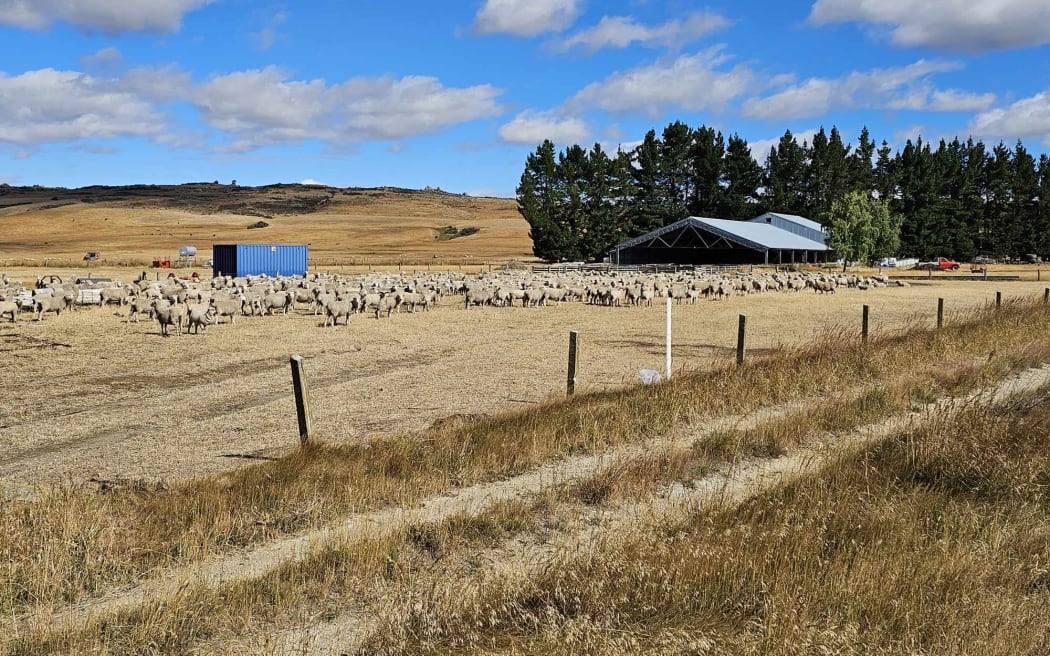
Mt Ida Station, Ida Valley, Central Otago Photo: Michael Godfrey
Otago's brown but better than last year and stock are doing okay here too. Any rainfall that's arrived has been hit and miss. Lambs are gaining good weight but winter crops that suffered through lack of moisture early on are looking patchy. Central's very dry, but 20 millimetres of rain a couple of days ago has kept winter feed alive.
And in Southland, for most it's been a magical season behind the farm gate, but a different story outside. Again, everyone's hoping lambs pile on the weight to counteract the massive drop in meat prices. Supplementary feed supplies are overflowing for the coming winter.

